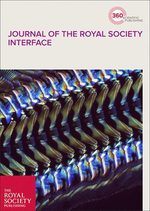Neuron
Jeffrey M. Donlea,Diogo Pimentel, Gero Miesenböck http://dx.doi.org/10.1016/j.neuron.2013.12.013
View Journal Article / Working PaperThe body uses two mechanisms to regulate sleep. One is the body clock, which attunes humans and animals to the 24 hour cycle of day and night. The other mechanism is the sleep ‘homeostat’: a device in the brain that keeps track of your waking activity and puts you to sleep when you are tired and need to reset. This mechanism is purely internal. When it malfunctions, sleep deficits build up. Over the past half-century, scientists have learned what precisely makes the circadian clock tick. The crucial insight came in 1967 with the discovery of mutant fruit flies whose clocks were abnormally fast or slow. In this study, scientists from the Centre for Neural Circuits and Behaviour now lift the curtain on the second master regulator of sleep: the homeostat.




